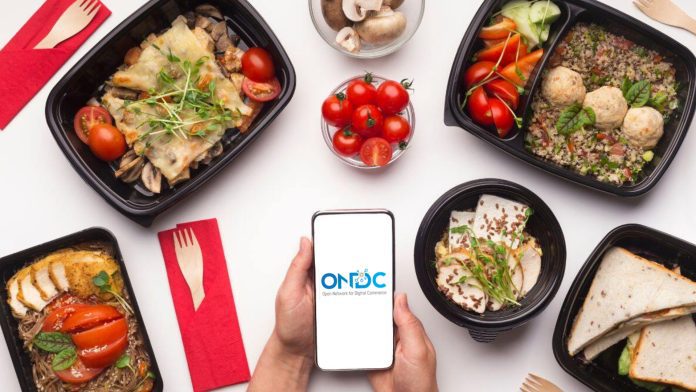According to insiders, the Open Network for Digital Commerce (ONDC) witnessed a significant surge in retail orders last weekend, reaching an impressive milestone of 30,000. This achievement is noteworthy considering the recent reduction in government-backed incentives for consumers and network participants. Currently, the majority of retail orders on the platform are focused on the food and beverages category, with a smaller volume pertaining to groceries.
Read More: ONDC revamps incentive structure, imposes INR 100 limit on discounts for participants
“As ONDC has restructured its incentive schemes and brought down its subsidy payout per order, various buyer apps and seller apps like Paytm, Magicpin and others have begun working together to figure out how to give their own marketing push and discounts to generate demand,” said an industry source.
“Typically, the network players raise the level of discounts on weekends to attract new users. This helps in pushing up the average number of daily retail orders in the following week… Also, ONDC has been pushing network participants to do more to be able to achieve the goal of 100,000 daily retail orders,” he added.
At the time of publishing, there had been no response from ONDC and Paytm regarding the matter. Magicpin, on the other hand, declined to provide any comment.
During recent weeks, the daily retail orders have consistently stayed within the range of 9,000 to 10,000, with a notable decline in discounts offered on the network. The previous peak occurred on May 8, when the order volume exceeded 25,000 for the first time.
During that period, ONDC faced criticism from industry observers and analysts who believed that the discounting system was not viable in the long term. This concern was particularly directed towards a government-supported initiative aiming to establish fair competition among buyers and sellers.
Ever since the updated incentive scheme took effect on June 1st, buyers are now entitled to receive discounts on a maximum of five transactions per month. Previously, buyers could enjoy discounts on up to three orders per day, but the total number of discounted orders was limited to 30 in total.
Furthermore, there has been a change in the maximum incentive spend per order, which is now limited to INR 100, whereas it was previously around INR 125. It is important to note that the total discounts applied to all prices should not surpass 50 percent of the total order value.
“ONDC, being a recently established concept, offers limited support to network participants during an initial period to give a boost to the network. In accordance with this approach, we are assisting network participants such as seller and buyer apps by providing incentives up to a specific threshold for activities like seller onboarding and transaction stimulation,” stated T Koshy, ONDC chief, in a statement last month.
During the peak of the high incentive regime implemented by ONDC, we observed that prices of food items on the platform were consistently 5 percent to 25 percent lower compared to popular food delivery platforms like Zomato and Swiggy. This significant price difference sparked a debate on whether ONDC had the potential to disrupt the duopoly established by these two venture-funded unicorns.
Read More: ONDC sparks price war, threatens Zomato and Swiggy dominance in food delivery space
According to another source, Magicpin, backed by Zomato, has experienced substantial growth and currently serves as a focal point for processing 30,000 orders per day on the network. Magicpin plays multiple roles within the ecosystem, serving as a technology service provider to buyer apps, a logistics aggregator, as well as operating as both a buyer and seller platform on the network.
In the meantime, ONDC has informed network participants to prepare for an upcoming initiative known as Super Saver Sunday, starting from June 18. This initiative, strategically timed to coincide with Father’s Day, aims to boost demand on the network.
Read More: How to use ONDC – The affordable food delivery app that’s creating waves against Swiggy and Zomato
With the support of the government, ONDC aims to counter the monopolistic control of major players in the e-commerce and food delivery sectors such as Amazon, Flipkart, Swiggy, and Zomato. Its primary objective is to prevent the dominance of a few large platforms in these industries.
Through the network, the government aims to achieve a significant increase in e-commerce penetration within the country. The goal is to reach a penetration rate of 25 percent within the next two years, connecting 900 million buyers and 1.2 million sellers through the network, resulting in a projected gross merchandise value of $48 billion.



